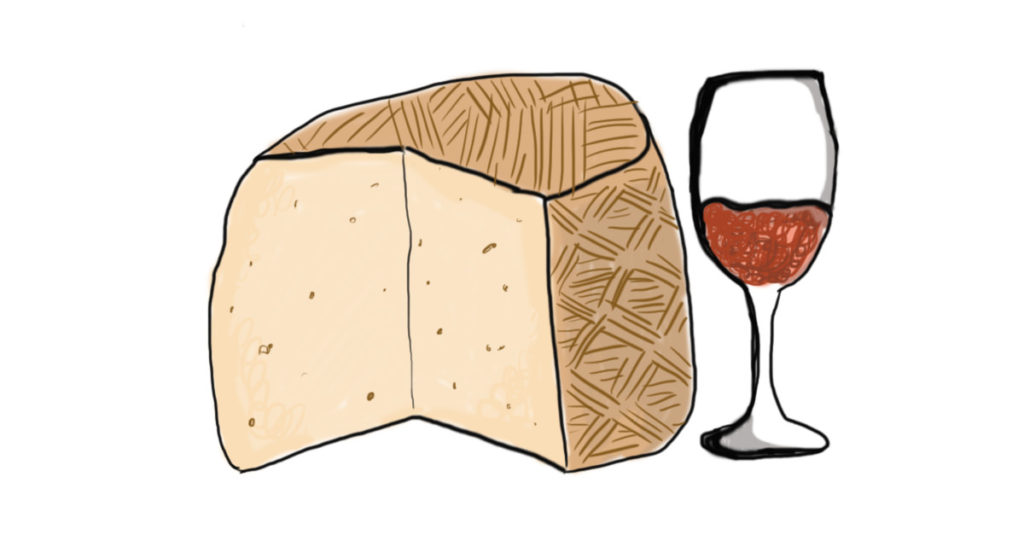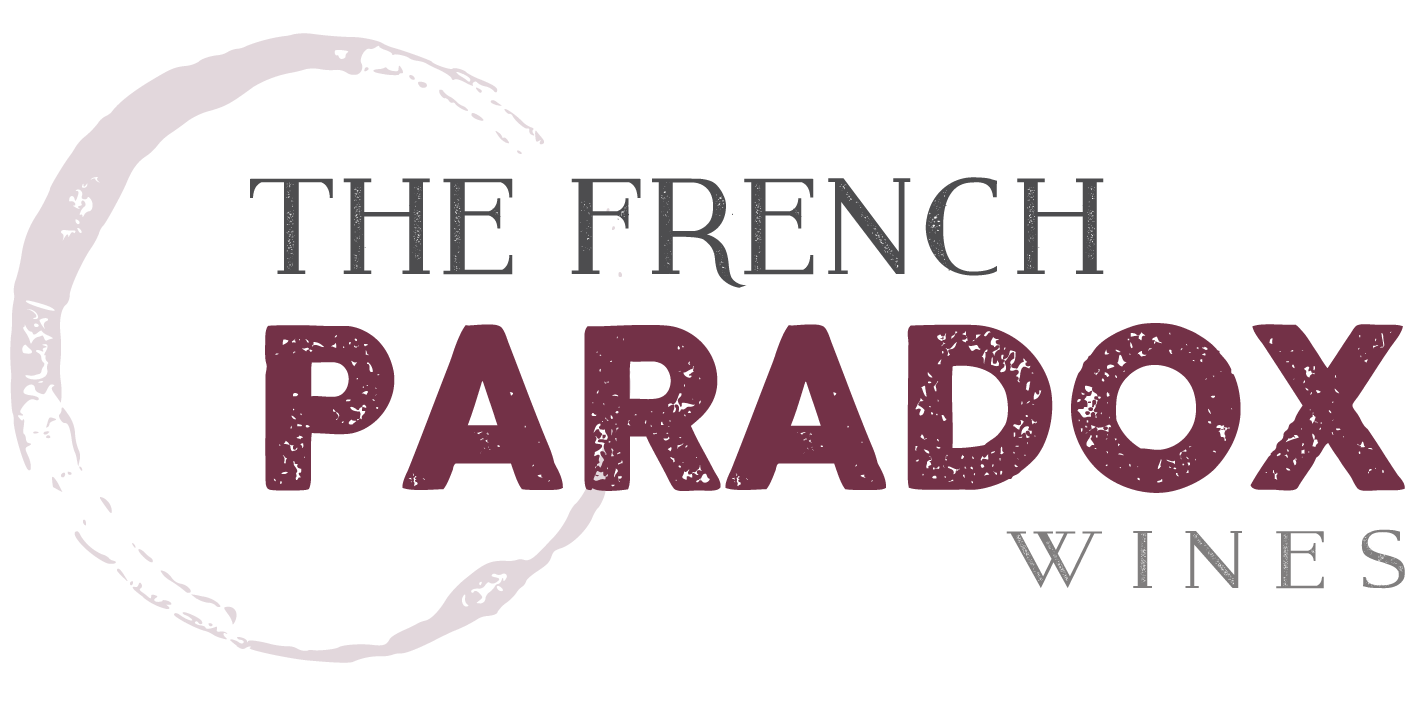Everyone knows that wine and cheese ‘go’ well together. The obvious topic then would be what wine works well with what cheese. That’s actually pretty easy to figure out. Point of origin matters, i.e., Brie with Beaujolais. But more importantly, acidity matters. So, the rules are: young, soft, creamy  cheeses pair with crisp, citric wines, mostly white. Aged, hard cheeses pair with tannic reds. Blue veined cheeses with sweet wines. Moderately aged (6 months or so) cheeses go with big whites (Chardonnay) or light, young reds (Gamay or Pinot Noir). Goat cheese always, always, always with crisp whites. Done.
cheeses pair with crisp, citric wines, mostly white. Aged, hard cheeses pair with tannic reds. Blue veined cheeses with sweet wines. Moderately aged (6 months or so) cheeses go with big whites (Chardonnay) or light, young reds (Gamay or Pinot Noir). Goat cheese always, always, always with crisp whites. Done.
However, the topic that I’m really interested in is not ‘what’ but ‘why’. Why does wine and cheese go well together?
There are (at least) two parts to the answer; scientific and historical.
Science first…A recent (2016) scientific study shows that eating cheese may actually increase how much someone likes the wine they are drinking. The study, published in the October 2016 issue of the Journal of Food Science, used a new sensory evaluation method and found consuming cheese while drinking wine impacted the description and preference of different wines. Results showed that cheese consumption had an impact on the description for all wines, and impacted preference for most. None of the four cheeses included in the study had a negative impact on wine preference. Liking of each wine was increased or remained the same after cheese intake. In both red wines (Bourgogne and Madiran), the four cheeses decreased the duration of dominance of astringency and increased that of red fruits aroma. In the sweet white (Pacherenc), the duration of dominance of sweetness was not changed by cheese intake, but in the white dry wine (Sancerre), cheeses had an impact on the main aroma. The basic premise behind this is that fats and astringency balance each other in our mouth, much like vinegar and oil.
But that doesn’t answer the historical question. Are time-honored pairings merely cultural accidents? Did science, even elementary science drive these pairings? Did one particularly taste evolved ancestor once say, ‘Hey, wait a minute, let me taste that again, I think the young cheese pairs better with this wine?”
Unlikely. I think it was survival.
We modern folk tend to think of wine and cheese as luxuries. Historically, however, they were created and evolved to respond to the overwhelming human need to survive. The production of cheese predates written history. There is no conclusive evidence indicating where cheese-making originated. It likely originated either in Europe, Central Asia, the Middle East or the Sahara sometime in the 5th or 6th century BC. For preservation purposes, cheese-making may have begun by the pressing and salting of curdled milk. Curdling milk in an animal’s stomach made solid and better-textured curds, leading to awareness and addition of rennet. Hard salted cheese is likely to have accompanied dairying from the outset. It is the only form in which milk can be kept in a hot climate. Animal skins and inflated internal organs provided storage vessels for a range of foodstuffs. Cheese produced in Europe, where climates are cooler than in the Middle East, required less salt for preservation. With less salt and acidity, cheese became a suitable environment for useful microbes and molds, giving aged cheeses their pronounced and interesting flavors.
Similarly, It has been hypothesized that early humans climbed trees to pick berries, liked their sugary flavor, and then begun collecting them. After a few days with fermentation setting in, juice at the bottom of any container would begin producing low-alcohol wine. According to this theory, things changed around 10.000-8000 BC with the transition from a nomadic to a sedentism style of living, which led to agriculture and crop domestication. Wine consumption, perhaps due to its ability to alter consciousness, has had a religious affiliation throughout history, but there exists little doubt that wine was also considered to be safer than water. Water scarcity (which lead to the building of Roman aqueducts) as well as water-borne disease made wine consumption practical, and winemaking became ever more efficient and localized. Grape growing, although regulated as early as the 1st century AD, continued to practiced on nearly every socio-economic level.
Our modern, industrialized society is barely more than 2 centuries old. For tens of thousands of years prior, an aquarian society prevailed and local consumption was the norm. So was malnourishment, disease and starvation. The masses had little of no means of purchasing foodstuffs; survival was dependent upon one’s ability to produce and/or trade. Most farms had more than one component; grain was produced for food and feed, livestock and dairy (cows, goats and/or sheep depending upon where) farming were part and parcel as was grape growing on those hillsides to steep for grazing or growing. You made cheese from your milk, wine from your grapes, bread from your grain, and sometimes even, ate meat from your herd. Or you starved. The types of cheese made were dependent upon the milk source, the climate and the soil structure (could you dig a cave to age and store?) The wines were likewise dependent on the health of the vines, soil, elevation, climate and weather. You stored/aged your wines in barrels in you lived around forests; in clay amphora if not. Vanity was not much in vogue among the working class.
So our ancestors drank wine and ate cheese and bread because it was that or…nothing.
Centuries later, we worry ourselves with questions about perfection. We want the perfect pairing of wine and food to elevate them both. In truth that happens (see above, astringency and fats) but not in the way we hope. We hope that by picking the perfect wine and serving it with the perfect cheese, not only will both taste better, but that somehow, we’ll actually be better. I think it’s quite enough that both will taste better.
